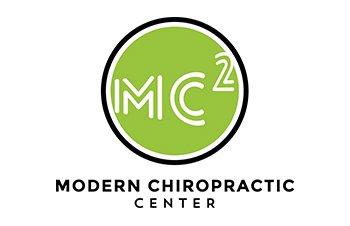A Modern Take on Osteoarthritis
Osteoarthritis (OA) or “degenerative joint disease” (DJD) is believed to be the most common joint disorder in the world. OA is a form of arthritis that can lead to symptoms ranging anywhere from mild stiffness to severe pain and disability. Although hundreds of millions of individuals have likely been diagnosed with OA since its discovery in 1869, much of the healthcare community’s understanding of this degenerative arthritis seemingly remains at a basic level and treatment options are believed to be limited. In this post we will discuss a deeper understanding of why OA occurs, the risk factors for developing OA, and what you can do to help reduce these risk factors.
What is OA and What Causes it?
OA is essentially the wear and tear or deterioration of one or more joints in the body. Many healthcare providers seem to believe this occurs as a normal part of aging given that the likelihood of OA increases as we age. However, age alone does not cause OA. So, what does? Below we have lower back x-rays of two 62-year-old males. The 62-year-old on the left has no OA and the 62-year-old on right has moderate OA. Can you spot the difference?


The green line represents the ideal lower back alignment. The red line represents the patient’s actual lower back alignment. The patient on the left has a healthy lower back alignment and no sign of OA. The patient on the right has poor lower back alignment and moderate signs of OA.
The difference between these two 62-year-olds is their spinal alignment. Research suggests that abnormal spinal alignment likely plays a significant role in the progression of OA. The reason for this can be explained in terms of mechanics and the design of the human skeleton. When properly aligned, the human skeleton contains specific features that allow our joints to absorb a substantial load without deteriorating. Proper spinal curvature is one of these features. When looking at the spine from the left side view, the neck and lower back alignment should form a c-shaped curve (lordotic curve) and the middle back should form a backward c-shaped curve (kyphotic curve). When our spines form these proper curvatures, we can support the weight of our body and sustain the downward force of gravity that is placed on our body without breaking down. Without proper spinal curvature and alignment, our ability to sustain the load under which our joints are placed decreases, causing deterioration over time.
To help explain this concept, think of your spine as a coiled spring. When you place a force into a curved spring, the spring absorbs the force and the space between each coil remains intact. When you place a force into a spring without a curve, the spring is unable to absorb the applied force, and the space between each coil compresses or narrows.

A. Curved spring without force applied. B. Curved spring with force applied. C. Non-curved spring without force applied. D. Non-curved spring with force applied.
Other Risk Factors
The key component of OA is the force applied over time. The greater the amount of force applied to a joint and the longer that force is applied, the greater the risk of OA. Above we discussed how our ability to absorb force effectively through proper spinal alignment can reduce the risk of OA. However, even with proper spinal alignment, the spine can only handle so much force without deteriorating. Therefore, in order to reduce the risk of OA, one must also reduce the amount of force applied to the joints in our body. The following factors may contribute to an increased risk of OA:
- Weight gain: Extra body weight adds stress to weight-bearing joints. The more you weigh, the greater your risk of developing OA.
- Injury: Injuries, such as those that occur when playing sports or from an accident, can increase the risk of OA. Even injuries that occurred many years ago and seemingly healed can increase your risk of OA.
- Repetitive stress: If your job or a sport you play places repetitive stress on a joint, that joint might be at increased risk of developing OA. The longer you engage in the activity, the greater your risk.
- Certain Metabolic Diseases: Diabetes and hemochromatosis have been linked to an increased risk of developing OA.
Reducing your risk of OA


X-ray results of a Modern Chiropractic Center patient who underwent spinal correction treatment. (Left: spinal alignment before treatment. Right: spinal alignment after 2 months of treatment.
To give yourself the best chance of reducing the risk of becoming one of the millions of Americans that develop OA each year, it is best to take a preventative approach. The proper preventative approach means reducing the risk factors mentioned above and taking care of your spinal health. At Modern Chiropractic Center our doctors are certified in CBP (Chiropractic Biophysics) analysis and corrective methods. We offer the latest methods of biomechanical analysis to measure and assess the alignment of your spine. If your spinal alignment is found to be significantly impacting your risk of developing OA, we will review the evidence-based methods that can be used to help manage and possibly correct your alignment issues. Please give our office a call at 208-629-1904 (Boise location) or 208-467-1975 (Nampa location) to get scheduled for a free consultation and exam.





